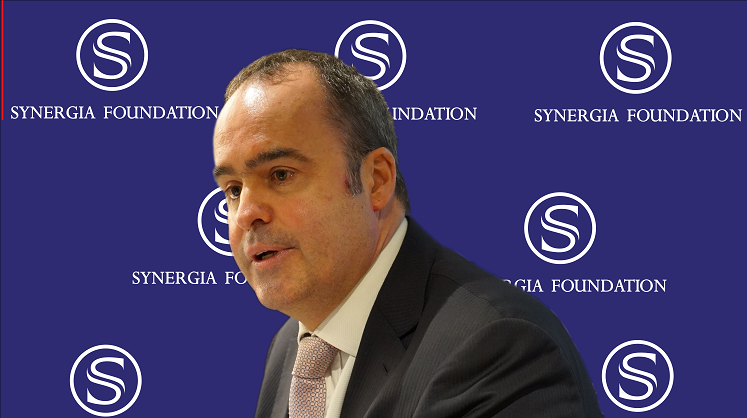Make in India: Defence and Aerospace
August 31, 2018 | Expert Insights

The Synergia Foundation organized a round-table discussion with Stepahèn Lauret, Chief Executive Officer of Safran India, moderated by KD Nayak, Former Director General of Defence Research and Development Organisation (DRDO).
The event was attended by experts who shared their insights and discussed the key challenges of the Make in India program in the defence and aerospace sector.
Background
The Aerospace & Defence Industry in India is a strategically important sector in the country. It provides critical support to the Indian Armed forces, which is the world’s 3rd largest military force and has the world’s largest volunteer army. In recent years, the Defence sector has grown extensively with a CAGR of 10%.
The lack of a sizeable domestic defence industry, accompanied by a mixed track record in defence modernisation - has resulted in the Indian Armed Forces not receiving the necessary military equipment to match India’s global aspirations.
With a budget allocation of $55.9 billion to the Ministry of Defence, India is the world’s 5th largest spender on defence. Between 2012 and 2016, the country accounted for 14% of all global arms sales its making India the world’s largest arms importer.
India’s Aerospace manufacturing stands at $250 million, compared to the $100 billion global market. However, the outlook for the Aerospace and Defence Industry in India is positive and expected to reach $70 billion by 2029, according to a joint report by IESA, Nasscom and Roland Berger.
With a value of about $16 billion, the Indian civil aviation market is also one of the fastest growing in the world with passenger traffic increasing at 20% every year. There are enormous opportunities for foreign investments and many global Aerospace and Defence companies are looking at India as a potential low-cost manufacturing destination and a high potential market.
Analysis
Synergia Foundation’s round table discussion on ‘Make in India: Aerospace and Defence Sector’ witnessed a non-partisan debate on the key challenges faced by the Aerospace and Defence industry.
Tobby Simon, the President and Founder of The Synergia Foundation, made the opening remark that accessing strategic technology is the key to a successful Make in India programme.
The forum discussions were initiated by Dr. K. D. Nayak, the former Director General of Defence Research and Development Organisation (DRDO). Dr Nayak in his opening remarks mentioned the need to find existing gaps in technology, how to bridge these gaps, the importance offsets and the key role played by DRDO in the industry.
Stephane Lauret in his keynote address spoke about the historical engagement of Safran with the Indian Aerospace industry. The relationship between Safran and India dates back to 1962.
He pointed out that Safran today is the 3rd largest Aerospace company in the world with 50,000 employed and that it is continually increasing. In India, Safran functions in 7 companies and in one training centre. Mr. Lauret added that, nearly 70% of all aircraft flown in India have engines made by Safran. He also highlighted that Safran powers all Hindustan Aeronautical Limited (HAL) Helicopters.
Despite Europe being their largest market, the civil aviation market has been expanding and has shifted to Asia. The Indian market is conducive for expanding their exports. Stephane also mentioned that they intend to operate 100% into the Indian market without any partners.
Stephane Lauret suggested that India will grow if they partner up with foreign OEM’s and develop a strategic partnership. Hence, as a result, the business will come naturally. He also remarked that foreign companies find it easier to come to India than China. He opined that there is less requirement of a PhD in the aerospace industry and that the required skills were available in India. He felt that the government was willing to listen and the key to offsets is to have a purchase commitment.
Counterpoint
Some co discussants pointed out that the French/ European government heavily subsidizes research and development in the Aerospace sector. For every Euro of private spend, the government funds 3 Euros. Hence there is a large component of European public money in R&D and this would be an integral factor to consider when requesting for transfer of technology. There were others who shared that critical technologies must be developed by DRDO.
Certain arguments were made with regard to how there needs to be a shift in the perspective of Indian companies and how they must innovate and compete globally.
Assessment
Our assessment is that the forum provided a deep understanding of the key challenges and the gaps that need to be bridged to have a successful Make in India program. We feel that accessing strategic technologies will be quintessential to have a credible long-term manufacturing strategy.








Comments